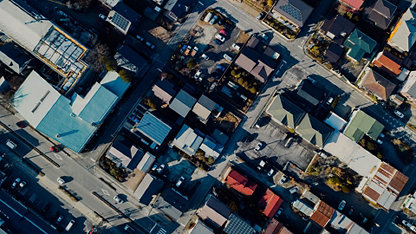Britain’s most pro-Remain location in the 2016 EU membership referendum was the London borough of Lambeth.
So it is kind of funny that, five days into 2017, one of the borough’s main highways was in enthusiastic breach of European law. EU public health rules state that the average hourly level of nitrogen dioxide (NO2) must not exceed 200 microgrammes per m3 more than 18 times in a year.
By 5 January 2017, according to researchers at King’s College London, Lambeth’s Brixton Road had already exceeded that limit with its 19th such breach. Were it to continue at that rate, the street would run up nearly 1,400 breaches over the year, which would sound crazy, except that one sensor on Putney High Street did this more than 1,200 times in 2016. NO2 has been linked to heart disease, asthma and cancer. In a very real sense, London is bad for your health.
Not just London, though: in February, the European Commission accused the British government of repeated breaches on air pollution limits in 16 areas, including Birmingham, Manchester and Glasgow. Final warnings were also sent to Germany, France and Italy.
“A recent Imperial College study found 15 cities globally where the air is so bad that exercising outside is worse for you than staying indoors and doing nothing.”
European air, though, is Alpine fresh compared with some developing countries. Much of China sits under a near-permanent haze; in January, Greenpeace warned that not a single city in northern India was complying with World Health Organization (WHO) air quality standards. A recent Imperial College study found 15 cities globally where the air is so bad that exercising outside is worse for you than staying indoors and doing nothing.
The term “air pollution” can encompass carbon monoxide, sulphur dioxide, ozone – anything, indeed, which shouldn’t really be found in air and tends to have nasty side-effects when it is. Today, though, debate tends to focus on two particular things.
One is particulates: tiny specks of solid matter. These can include the stuff released from burning wood, agricultural fertilisers, industrial waste products, even the dust thrown up by vehicles. Short-term exposure can cause breathing problems; long-term exposure can cause heart or lung disease and premature death.
Because they are the by-product of industry or wood-burning stoves, or the sort of material blown in on desert winds, particulate levels are highest in Asian and African cities. The WHO’s recommendation is that levels of PM2.5 – particles less than 2.5 micrometres in diameter – should not exceed 10 microgrammes per m3. In Delhi, the most recently recorded annual mean figure was 122. By comparison, it was 18 in Paris, and 15 in London.
So, can Europe breathe easy? Well, no, because there is the other big offender to contend with: nitrogen oxides, particularly NO2. As with particulates, nitrogen oxides are a by-product of industrial combustion. The reason such pollution has worsened in recent years, though, is because of a change in how we power our vehicles. In the last decade, numerous governments gave drivers financial incentives to switch to diesel, on the grounds it would cut carbon emissions. It did. Air pollution? Not so much.
But there is another reason air pollution has climbed the agenda. Every year the tide of peer-reviewed research grows. And, as thinktank ResPublica discovered, every year the research gets more certain, and the number of predicted deaths increases.
A shocking 2014 WHO report found around seven million people died of exposure to air pollution in 2012 – more than double previous estimates. That means, of every eight deaths that year, one was linked to air pollution.
So it is understandable that air pollution has become important in the built environment sector. Matt O’Brien heads the UK air quality practice at Mott MacDonald. His specialism, he says, has “shot up the agenda” since he began in 2007. “People were rarely interested. Now I have friends asking: ‘How will it affect our kids?’.”
Beth Ambrose is director of upstream sustainability at JLL, where much of her work is concerned with indoor air quality. She is all too aware that, the worse the air outside a building, the more effort – and money – its owners have to put into filtering systems. “The higher the ventilation rate, the lower the volume of pollutants, and the higher the rate of cognitive function,” she says.
Air quality is shaping up as a factor in asset valuation, too, affecting the decisions about where to live, work and invest. As an example, Ambrose points to the competitive threat posed to heavily-polluted shopping streets by filtered indoor malls. She adds that data on air quality is starting to pop up on property adverts, as energy efficiency ratings did before it. Mark Hayward, chief executive of the UK’s National Association of Estate Agents, predicted in the Daily Telegraph in May 2017 that: “I don’t think it will be very long before it becomes compulsory to show pollution information on listings.”
And buildings themselves are significant polluters of city air: research from the thinktank Policy Exchange found that the gas burned by cooking and heating systems was responsible for 21% of Greater London’s emissions of nitrogen oxides in 2010 – and 38% of nitrogen oxides in central London. Investments inside buildings – replacing inefficient boilers, switching from gas to induction hobs – can make a significant difference.
Minimising the damage that new buildings do to air quality is increasingly big business, as well. O’Brien identifies two main threads to his work at Mott MacDonald. One is ensuring the air around new buildings meets government standards. Sometimes this means moving proposed developments back from busy roads: a shift of a few metres can bring a radical improvement in air quality.
The other side of O’Brien’s work involves looking at the impact the building itself will have on air quality. That can take in everything from whether it will help trap pollution in “street canyons”, to the use of natural gas in its heating and kitchen systems, to the burden its occupants will place on the transport network.
The last of these things, though, points to the limits of the role the sector can play: the fundamental causes of urban air pollution – the activities of those working, living and travelling in cities – are structural and, as such, require policy-based solutions.
The myriad sources of air pollution mean that official responses have been equally varied. In the run up to the 2008 Beijing Olympic Games, the city’s government relocated dozens of local factories and banned the most polluting vehicles from the capital – and, when that didn’t work, from neighbouring cities, too.
In India, matters are more complicated – both because so much pollution comes from domestic sources, and because ordering the population to change is less likely to wash in a democracy. One-third of air pollution in India is thought to come from cooking stoves, and no government yet has had the nerve to ban them, or the money to subsidise cleaner replacements.
There are echoes of this problem in more developed economies, where NO2 remains the biggest source of pollution, but it has so far been left largely to individual cities to address the issue.
Caroline Watson heads low-emission vehicles policy at C40 Cities, a coalition of cities committed to tackling climate change. She points to three things mayors can do. One is going emission-free in their own fleets – buses, cleaning vehicles and so on. “The message we’re getting from cities is that they want to buy clean vehicles – but they need to know that such vehicles are going to do what they need, and that they’re going to be cost-effective.”
That points to the second: using their collective market power to nudge the motor industry along. She points to C40’s 2015 “clean bus declaration”, in which 26 cities pledged to buy 45,000 buses by 2020. Such initiatives not only “send a clear signal to say ‘we want those buses’, they also create economies of scale.”
And finally, cities can use their regulatory muscle: creating low-emission zones, or setting rules on what kind of vehicles are allowed into the city. Several cities, among them Paris and Madrid, have temporarily implemented “odd-even rationing”, whereby only cars with a registration plate that ends with an odd or an even number, depending on the day – are allowed on the roads.
The French capital has also closed one of its busiest roads along the Seine, while Oslo has temporarily banned diesel vehicles altogether. London plans to introduce an Ultra Low Emission Zone from April 2019, levying a daily surcharge on the most polluting vehicles.
But such policies are often controversial for one, intractable reason. In the West, the biggest polluters are not evil corporations: they are us. The cars we drive; the buses we use; the lorries that power our economies. In many countries, furthermore, the diesel vehicles that are the worst polluters were purchased after encouragement from carbon-conscious governments.
Over the long term, several policies could address this: electric vehicles powered by renewable energy, or investments in cycling or public transport. And the announcements that France and the UK will ban new petrol and diesel cars from 2040 are big steps forward.
But all of these involve big investments or significant behavioural changes, and none of them will be quick fixes. The residents of Lambeth will, in all likelihood, be coughing for some time to come.

















